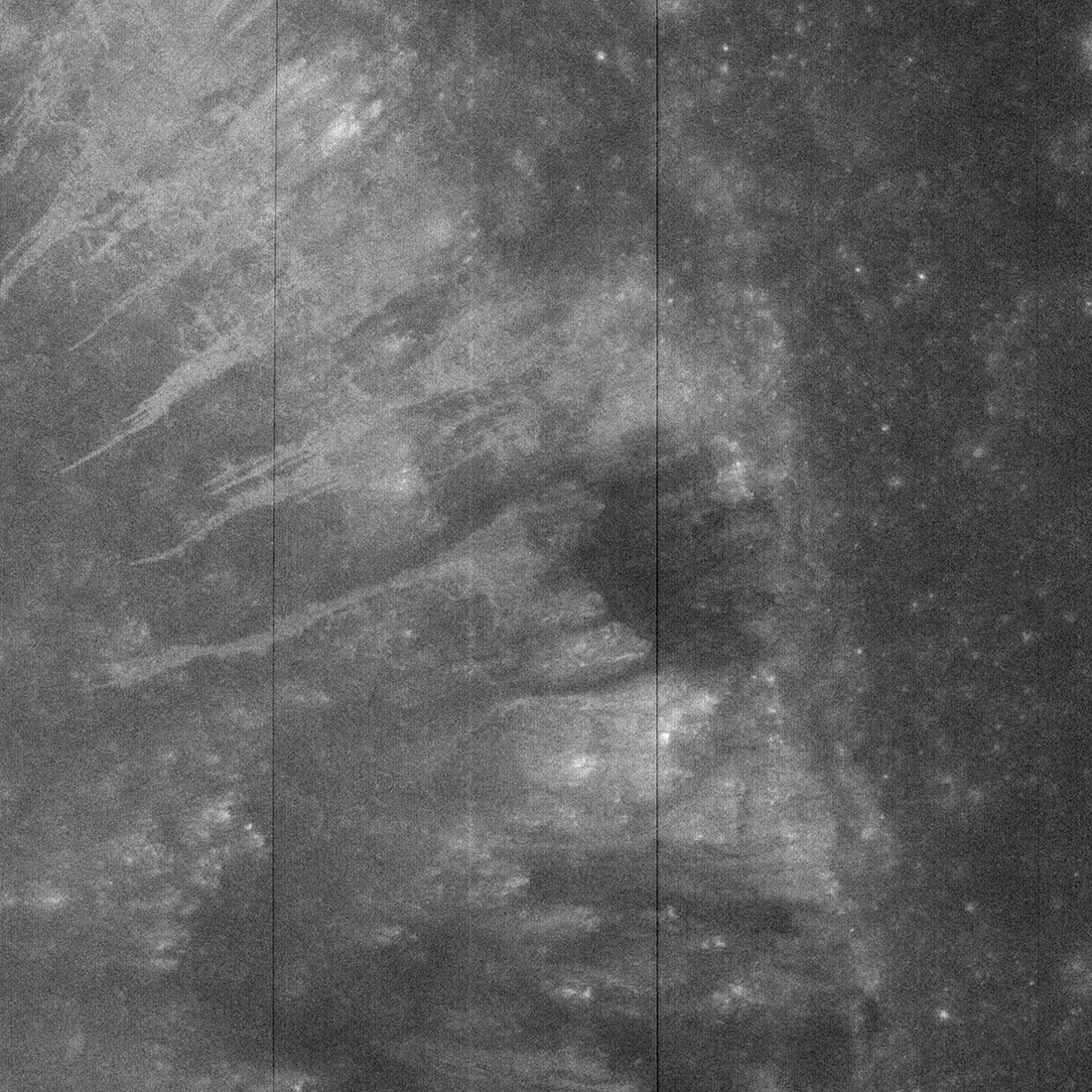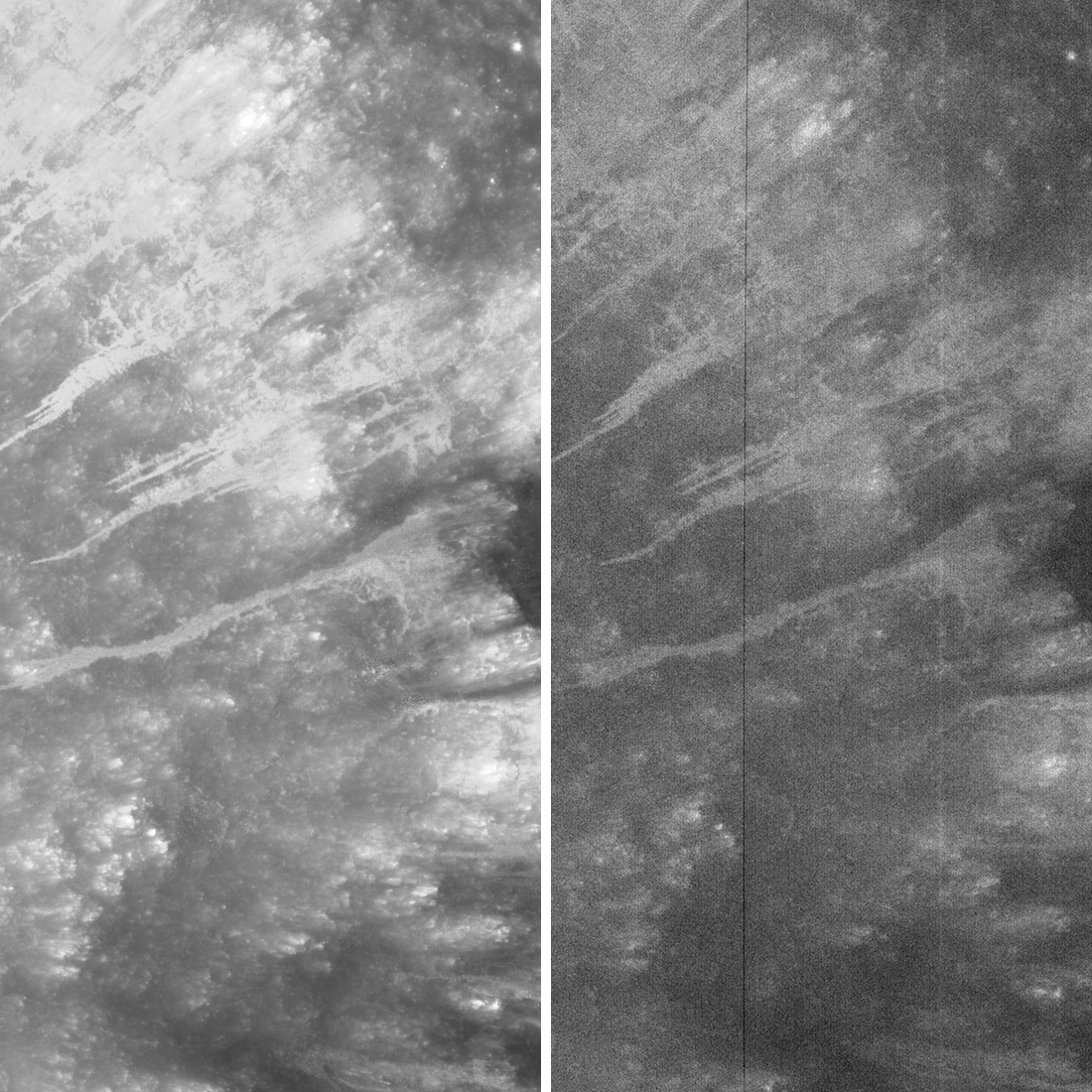
Under Earthshine

The Korea Aerospace Research Institute (KARI) Korea Pathfinder Lunar Orbiter (KPLO, also known as Danuri) is now in its mapping orbit. On January 22, KPLO flew very near the sub-Earth point just after a new Moon, meaning the Earth was nearly full as seen from the Moon. As a challenging test of instrument sensitivity, ShadowCam snapped this image. Despite the very dim lighting, one can see the Moon! Earthshine is about ten times dimmer than the average permanently shadowed regions (PSR) that ShadowCam was designed to image. This image shows that ShadowCam can see into some of the dimmest PSRs.

Follow the full path of landslides on the steep slopes of Bruce crater (zoom out and scroll up a bit).
Related Featured Images
Posted by Mark Robinson on 20 February 2023